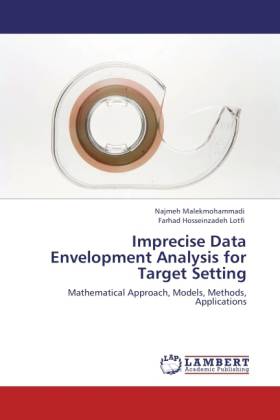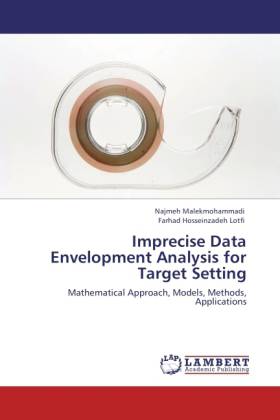
- Afhalen na 1 uur in een winkel met voorraad
- Gratis thuislevering in België vanaf € 30
- Ruim aanbod met 7 miljoen producten
- Afhalen na 1 uur in een winkel met voorraad
- Gratis thuislevering in België vanaf € 30
- Ruim aanbod met 7 miljoen producten
Zoeken
Imprecise Data Envelopment Analysis for Target Setting
Mathematical Approach, Models, Methods, Applications
Najmeh Malekmohammadi, Farhad Hosseinzadeh Lotfi
Paperback | Engels
€ 48,45
+ 96 punten
Omschrijving
In this book, the new aspect of target setting and resource allocation in data envelopment analysis is presented. The existing data envelopment analysis (DEA) target models are just defined for exact data. Considering the importance of imprecise data such as fuzzy, ordinal and interval data in organizations, DEA target models and method are proposed with some advantages over the previous ones, and also defined for imprecise data. The suggested target models for imprecise data are originally non-linear mathematical programming problems, but two proposed methods are used to convert them to the linear ones. The different aspects of target setting in DEA are also discussed. Numerical illustrations are provided in this book to show some desired results of the established imprecise target models over the existing ones. Considering the wide application of data envelopment analysis in organizations, one of the established models is applied to the evaluation of efficiency and resource allocation of commercial banks in Malaysia. Finally, the discussions on some approaches in our researches are presented. Future studies and improvements are also given to conclude this book.
Specificaties
Betrokkenen
- Auteur(s):
- Uitgeverij:
Inhoud
- Aantal bladzijden:
- 92
- Taal:
- Engels
Eigenschappen
- Productcode (EAN):
- 9783845476247
- Verschijningsdatum:
- 12/09/2011
- Uitvoering:
- Paperback
- Afmetingen:
- 152 mm x 229 mm
- Gewicht:
- 145 g

Alleen bij Standaard Boekhandel
+ 96 punten op je klantenkaart van Standaard Boekhandel
Beoordelingen
We publiceren alleen reviews die voldoen aan de voorwaarden voor reviews. Bekijk onze voorwaarden voor reviews.











